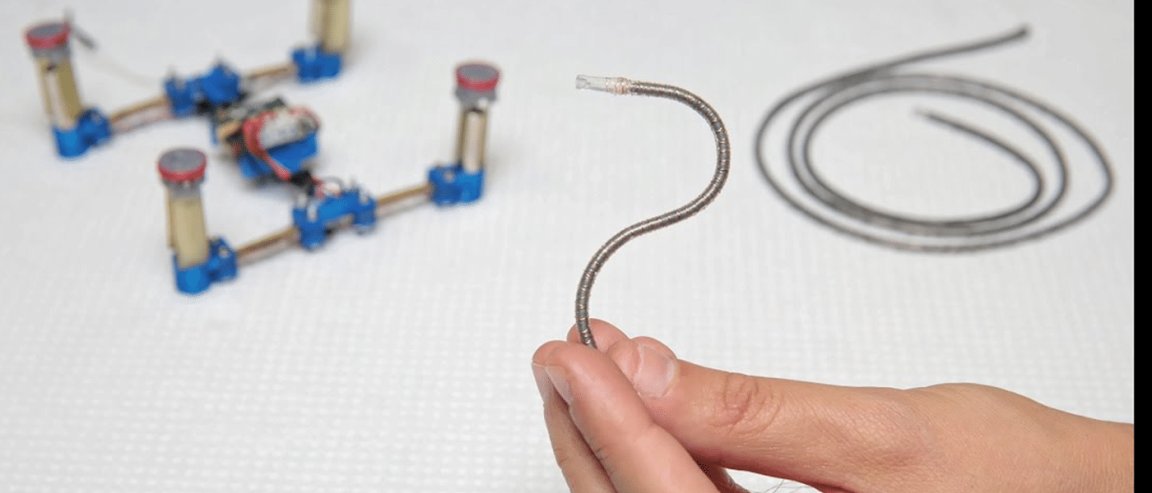
From Firm to Flexible and Back Again
People creating robots, orthopedics, and advanced medical devices now have a new material with which to work as researchers at École Polytechnique Fédérale de Lausanne (EPFL) have created a new “self-healing” thread. As detailed in Advanced Materials, the thread is initially rigid, but the addition of a small jolt of electricity causes it to become flexible and stretchable, able to extend to up to four times its length. Once cooled, the thread regains its rigidity.
The key to its unique characteristic is the fiber’s structure. It consists of a rigid metal core encapsulated in silicon. When voltage is applied, the core melts, and the thread takes on the properties of the flexible silicon. This transition from firm to flexible takes only ten seconds and is reversible, so any break in the metal core can be repaired by simply melting and cooling the thread again.

So Much Potential
As EPFL scientist Alice Tonazzini explained to Digital Trends, the thread has potential uses in fields such as healthcare and robotics.
In the former, it could be a viable construction material for reusable casts for treating fractures, as well as surgical tools that can contort to the shape of human orifices, making surgeries quicker and easier. The scientists at EPFL imagine that the development could be pushed further to create even more advanced materials for biological applications that can “mimic the complex functionalities of biological tissue.”
“Soft robotics” have great potential in applications like search-and-rescue operations, where it may be necessary for a robot to squeeze through rubble to look for survivors. Robots that switch between hard and soft states have been investigated in other experimental setups, and the thread could help push those types of experiments along as well.
With innovations like this new thread, not only is the technology of the future poised to take on many shapes and forms, so are the materials we use to build it.